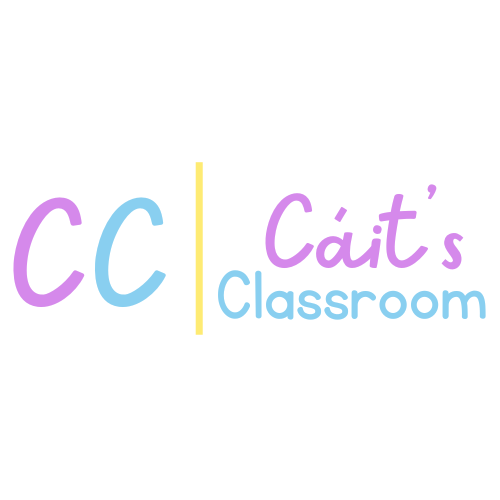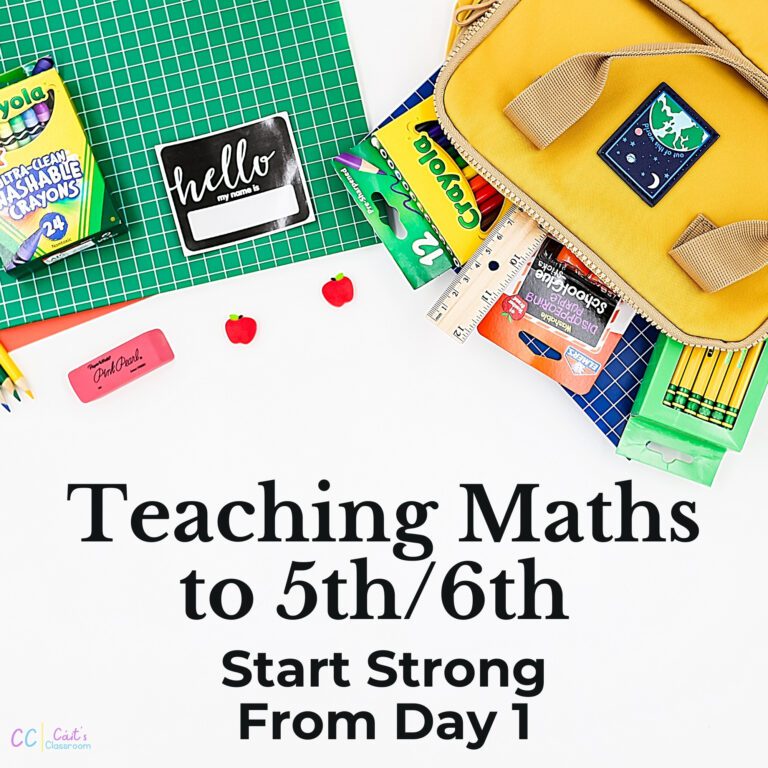Teaching 5th/6th class maths can feel like diving into the deep end, especially for newly qualified teachers. It’s all about finding that balance between curriculum alignment, effective strategies and personalised learning experiences. The goal is to keep students engaged while also developing their mathematical understanding.
This can seem like a LOT to tackle in your NQT year. But hey, here’s the good news – you’ve got this! Welcome to your Ultimate NQT Guide to make maths teaching a breeze in 5th and 6th class. No time to read the full blog? Grab your handy cheat sheet and pop back later for the detailed description when you need it.
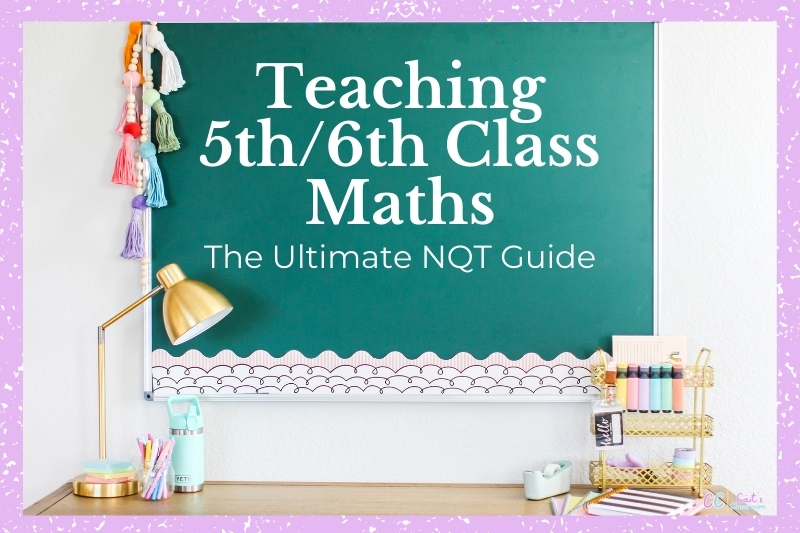
1. Curriculum Alignment and Scope
- Review the strands, strand units and elements of the new Primary Mathematics Curriculum for 5th/6th class to make sure your lessons are right on target.
- Use the progression continua to break down the broad learning outcomes into more manageable topics to cover throughout the school year.
- Identify and take note of key competencies, skills, and vocabulary that students need to master for each strand.
- Use this information to plan your first month in 5th/6th, adjusting as needed once you get to know your students better.
- Once you get to know your gang, start looking ahead to the rest of the term, linking between the four interconnected strands where possible.
2. Engaging Maths Teaching Strategies
- Incorporate a variety of teaching methods such as hands-on activities, group work, games, and technology to keep 5th/6th class students actively involved in learning. For example, use hands-on activities like baking to learn about weight and liquid volume concepts.
- Use real-world examples and applications to connect 5th/6th class maths concepts to students’ everyday experiences. For instance, using sports statistics from students’ favorite teams to explore concepts like averages, percentages, and data interpretation.
- Encourage discussion and problem-solving to promote critical thinking and mathematical reasoning skills. A great example of this is project-based learning where students have to plan a budget for an event or large purchase. This gets them to apply mathematical reasoning skills to solve practical problems.
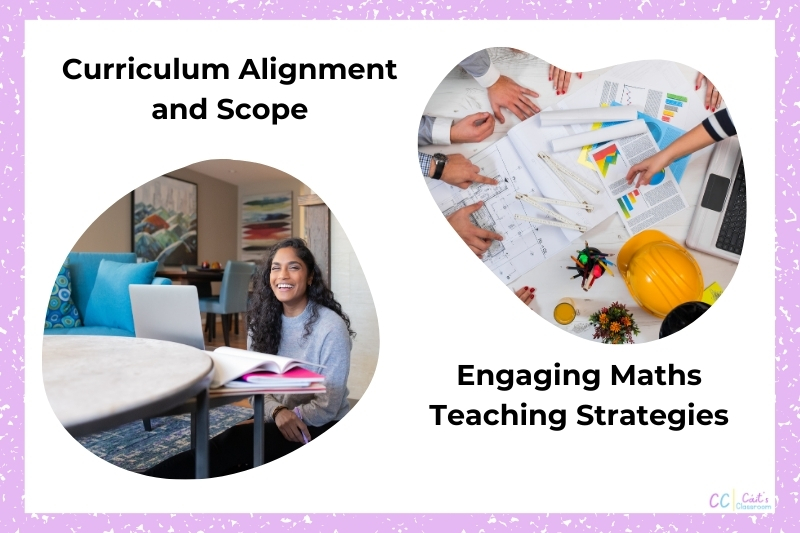
3. Assessment and Feedback
- Use intuitive assessment, such as daily observations and informal check-ins, to gauge student understanding on the fly. This helps you identify who might need extra support without interrupting the flow of your maths teaching.
- Schedule planned interactions like regular one-on-one or small group conferencing sessions. Here you can discuss students’ progress and address any misconceptions. These planned sessions provide a structured opportunity for feedback and personalised guidance.
- Gauge student progress and understanding of key concepts through assessment events like quizzes or tests. Use the results to inform your teaching strategies and ensure that all students are on track with the curriculum at their appropriate level.
4. Differentiation and Personalisation
- Differentiate instruction by offering varying levels of difficulty, additional support, or enrichment activities to meet the diverse needs of students. For example, provide advanced problems or project-based work for students who need a challenge and more guided practice or simpler questions on the same topic for those who need extra help.
- Plan for students to work independently, in pairs, or in small groups to cater to different learning styles. Consider pairing students strategically for peer learning, where they can support each other and collaborate on problems, fostering a sense of teamwork.
- Personalise learning by involving students in setting goals, tracking their progress, and reflecting on their growth through the new Primary Mathematics Curriculum. Encourage students to set their own learning goals, which can be tracked through progress charts or digital portfolios. This helps them take ownership of their learning journey and see their improvement over time.
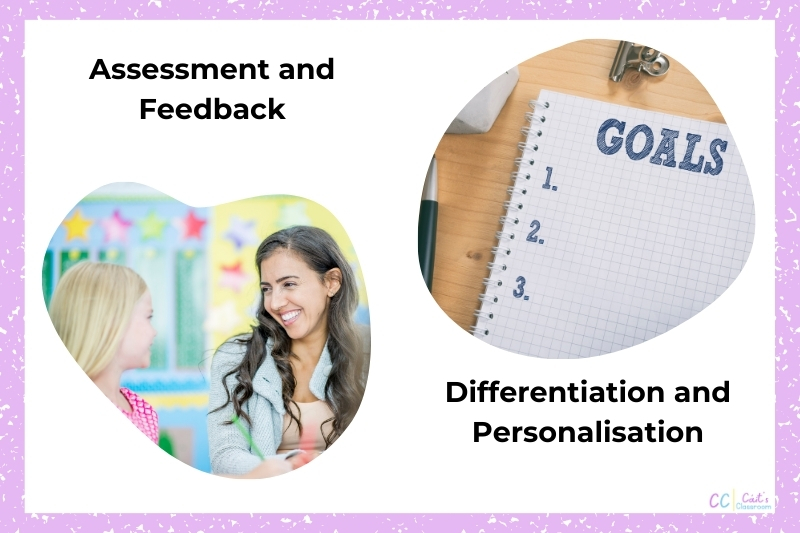
5. Maths Talk
- Foster a classroom environment where students feel comfortable sharing their mathematical thinking and reasoning. Use growth mindset activities to develop a supportive atmosphere where mistakes are viewed as learning opportunities rather than failures.
- Use think-pair-share activities where students first think about a problem individually, then discuss their ideas with a partner, and finally share their solutions with the class. This not only promotes active participation by all students but also helps them learn from each other’s perspectives.
- Introduce maths journals as a regular part of your classroom routine. Encourage students to write about their thought processes, challenges, and breakthroughs as you conclude your maths lessons. For example, after solving some challenging problems, ask them to reflect on what strategies worked, what didn’t, and why.
6. Parent and Community Involvement
- Keep parents informed about what children are learning in maths and ways they can support their child’s mathematical learning at home. Consider sending regular updates through newsletters, emails, or a dedicated section on the school’s website about the maths topics currently being covered in class.
- Collaborate with colleagues and community resources to enhance your maths teaching and provide additional support for students. Try partnering with community resources such as maths tutors, local businesses, or maths-related organisations to provide extra help or real-world applications of maths concepts.
- Organise maths-themed events to engage parents and the community in students’ math education. For example host a family maths afternoon where parents and students can participate in maths games, activities, and challenges together.
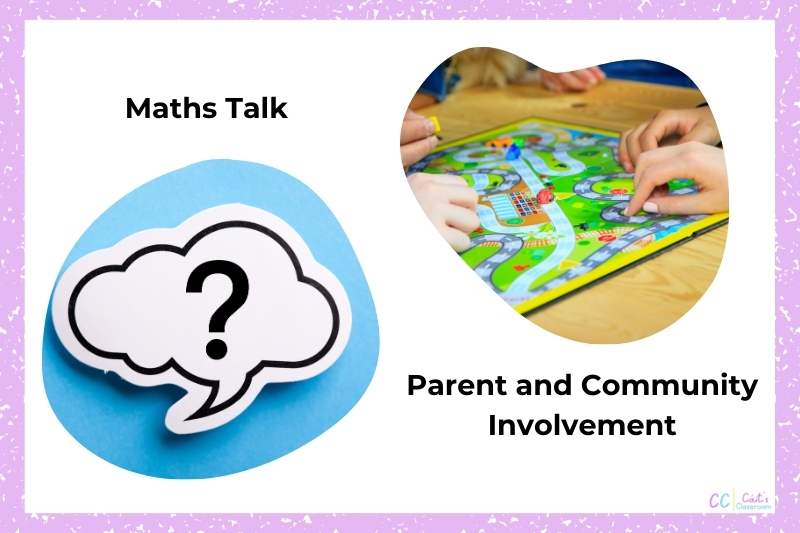
By incorporating these strategies and ideas into your maths teaching, you can create a dynamic and supportive learning environment where 5th/6th class students develop a strong foundation in primary school maths. Finding the balance between curriculum alignment, effective strategies, and personalised learning experiences is key. Keep these pointers in mind and your students are sure to be engaged while as they enhance their mathematical understanding.
(P.s. Don’t forget to grab your handy cheat sheet for a bullet pointed version of the blog post!)
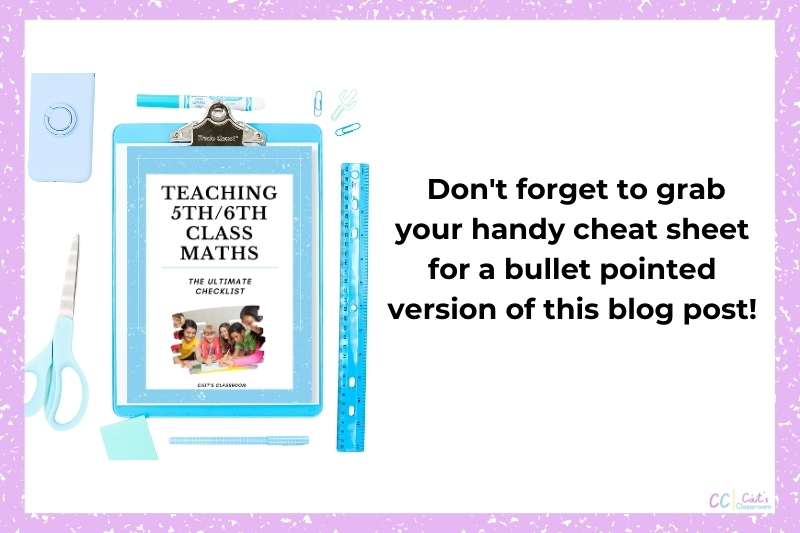
Enjoyed this blog? Join the Cáit’s Classroom email list to never miss a post!
